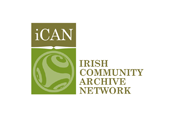Connemara Descendents To Dedicate Sign On August 20
By Michael Carlson
The Parks and Recreation Department of the City of Saint Paul, Minnesota, recently installed an interpretive sign which commemorates the community of Irish immigrants who inhabited an area of Saint Paul known as the Connemara Patch. The community existed from 1881 to the early 20th Century. It occupied an area roughly between East 7th Street and East 3rd Street which today forms parts of both Swede Hollow Park and Bruce Vento Nature Sanctuary. It also occupied an area south of the Mississippi River known as the West Side Flats. The interpretive sign is located in Swede Hollow Park alongside the bike trail just south of the 7th Street tunnel.
In honor of the past inhabitants of Connemara Patch, their descendants will hold a dedication ceremony near the newly installed sign On August 20, 2022 at 1:00 pm. For more information on the ceremony, please email Leslie Thomas at thomas0506@msn.com
The Irish inhabitants of the Connamara Patch community came from the western coastal areas of Counties Galway and Mayo, Ireland. They were small tenant farmers, fisherman, and kelp gatherers who had suffered mightily from the famine that gripped the westem counties of Ireland from 1879 to 1881. Most of the early inhabitants traveled to Minnesota under the sponsorship of two emigration plans. The first one was coordinated by Father James Nugent, an English Catholic social reformer, and Bishop John Ireland of the Diocese of Saint Paul, Minnesota. The Catholic Church sponsored the passage of over thirty destitute fam- ilies and set aside hundreds of acres of farmland near the community of Graceville in Big Stone County, Minnesota. Unfortunately, their lack of large-scale farming experience combined with record-breaking cold and snow during the winter of 1880/1881 caused the experiment to fail. In the spring of 1881, Bishop Ireland released most of the settlers from their obligations and helped them resettle in Saint Paul in the area that became known as the Connemara Patch.
The second emigration initiative was sponsored by the Quaker philanthropist James Hack Tuke who brought Connemara descendents to dedicate sign many more indigent Irish families from Connemara to Minnesota from 1882 to 1884. Largely focused on family units, he established a program that assisted financially poor Irish who wished to emigrate to the United States and Canada. Since many of their family and friends lived in the Connemara Patch and West Side Flats neighborhoods of Saint Paul, the community became a popular destination for the immigrants.
The Connemara Patch was a quaint and lively community where the Irish language was widely spoken. Many inhabitants worked for the rail- road, served as domestics in local ho- tels, and made lace. By the late 1880s as their circumstances improved, the Irish in the Connemara Patch began to leave the area for other parts of the city. state, and regions of the United States. By the early 1900s, the Irish were mostly replaced by other ethnic groups. The area was abandoned and structures demolished to make way for freeway construction in the 1950s. Many descendants remained in the West Side Flats until that neighborhood was razed for an industrial park in the early 1960s.









No Comments
Add a comment about this page